17 Best Flowers That Attract Bees
Updated: May 18, 2023
Create an ideal pollinator habitat by growing the plants and flowers bees love most. Plant these flowers that attract bees.
Bees are extremely important garden bugs that pollinate many of our favorite edibles and ornamentals. Native plants are always a great choice for attracting native bees, but many ornamental flowers will also help feed and support the bee population. When selecting plants, be sure to choose flowers bees love that bloom at various times throughout your growing season. This will ensure that bees have a reason to return to your backyard month after month. Plant these flowers that attract bees.
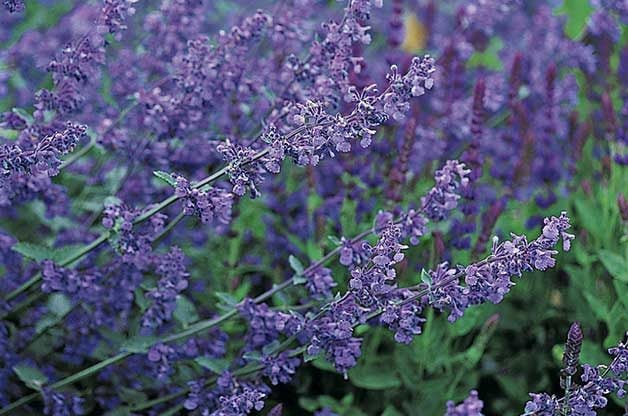
Catmint
Nepeta x faassenii, Zones 3 to 8
Don’t let the name sway you from planting these flowers that attract bees. Look for well-behaved varieties that do not reseed and take over the garden. You and the bees will be rewarded with blue flowers that top silvery foliage all season long.
Why we love it: One haircut midseason will keep this heat-and drought-tolerant plant looking its best throughout the growing season.
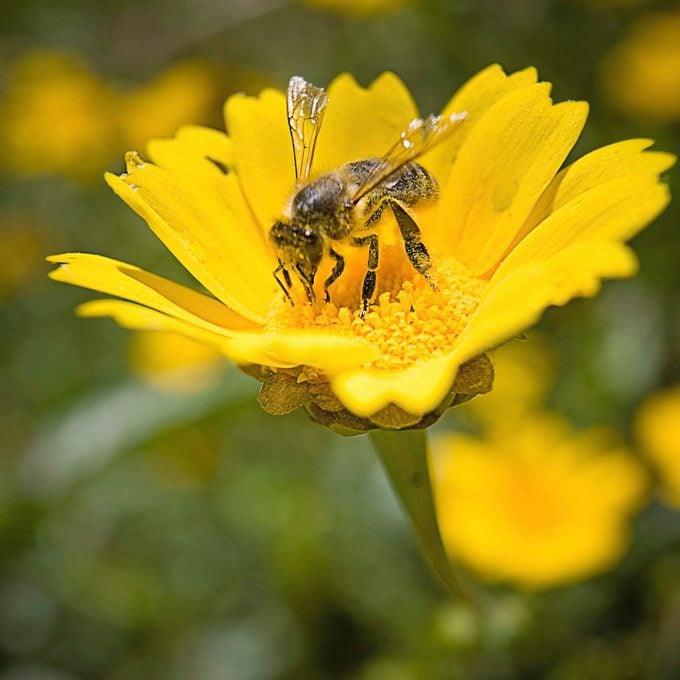
Calendula
Calendula officinalis, Annual
You may also know this edible flower as pot marigold. The yellowish white and orange petals were once used to flavor soups and stews. Grow in full sun with moist, well-drained soil. It thrives in cooler temperatures. Learn the difference between calendula and marigold.
Why we love it: This plant reseeds, providing years of beauty and nectar for bees in the garden. Discover sweet facts about honeybees.
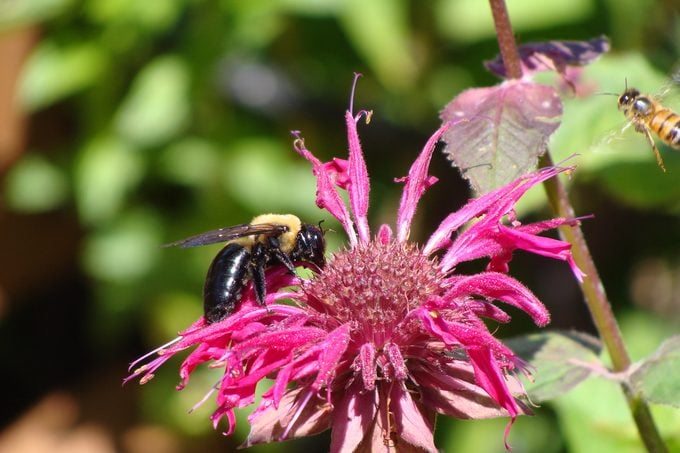
Bee Balm
Monarda, Zones 4 to 9
A list like this would not be complete without bee balm. This flower will attract bees and also hummingbirds and butterflies. This vigorous plant reseeds readily, but the fragrant leaves provide a bit of aromatherapy when thinning in spring.
Why we love it: The leaves of this North American native plant can be steeped to make tea.
Bring mason bees into your yard with a bee house.
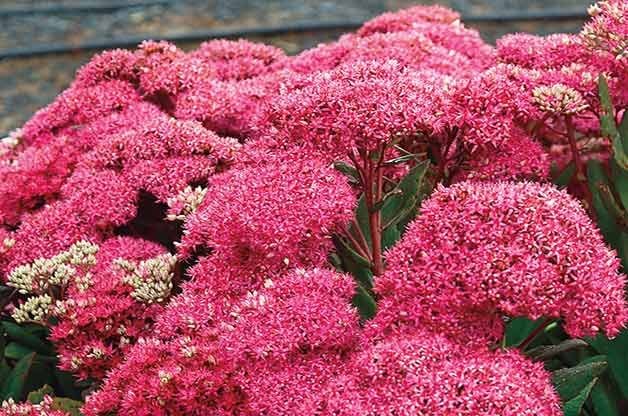
Sedum
Sedum, Zones 3 to 10
Planting both summer and fall flowering varieties will attract more bees and you’ll get season-long blooms. Grow these heat-tolerant plants in full sun for best results. There are lots of varieties out there, so select one that best suits your garden design.
Why we love it: There are so many options from ground-hugging varieties great for ground covers to more upright types for perennial and mixed borders.
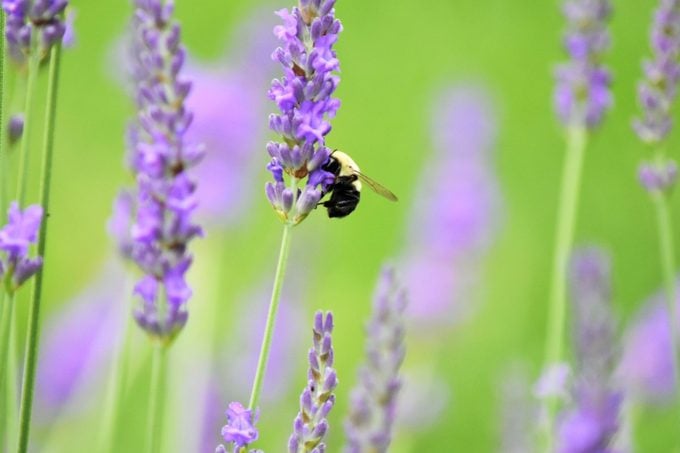
Lavender
Lavandula angustifolia, Zones 5 to 8
Full sun and well-drained soil are keys to successfully growing lavender. One of its appeals: The leaves and flowers are fragrant. Lavender’s silvery leaves will persist in mild winters adding to the winter garden’s beauty. Plant hardier varieties, like Hidcote and Munstead, in zone 5 and even 4.
Why we love it: Bonus! The flowers attract bees but deer and rabbits tend to leave this plant alone.

Borage
Borago officinalis, Annual
The clear blue star-shaped flowers of borage stand out in the garden and attract bees. You can eat the cucumber-flavored leaves raw, steamed or sautéed. This annual self-seeds, so it will be a long lasting member of the garden. And you will have plenty of seedlings to share with family and friends!
Why we love it: Once it’s established it is a drought-tolerant annual. Check out 6 key differences between bees and wasps.
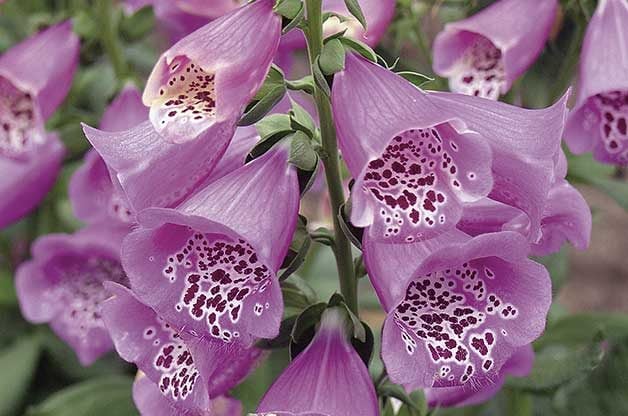
Foxglove
Digitalis purpurea, Zones 4 to 9
Spires of large bell-shaped flowers add vertical interest to the late spring or early summer garden. Foxglove is a great option for those gardeners with shady spaces and moist, organic soils.
Why we love it: Though a biennial, foxglove reseeds and tends to stay in the garden for years. If you want to enjoy these stunners every year, plant them two years in a row.
We found the best purple flowers to grow in your garden.
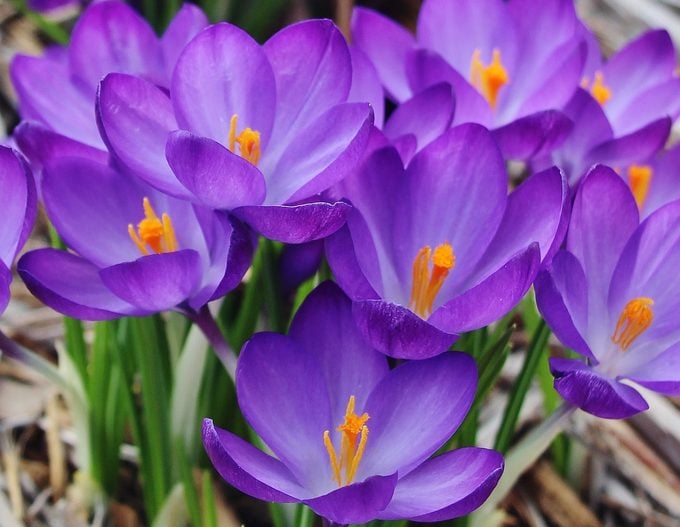
Crocus
Crocus, Zones 3 to 8
Start off spring with a burst of color in the landscape and nectar for the bees. Grow these small early bloomers in full sun or partial shade. Planting crocus in bulk will make an even greater impact in the garden.
Why we love it: There are cultivars that squirrels tend to leave alone. Try Little Tommies (Crocus tommasinianus) if you’ve had trouble with squirrels digging up your bulbs in the past.
Check out the ultimate guide to planting spring bulbs.
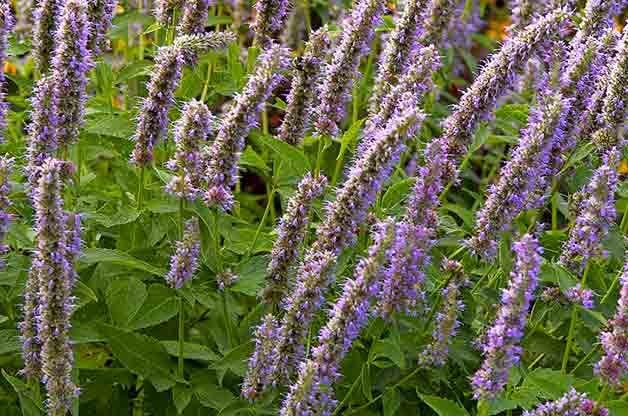
Anise Hyssop
Agastache foeniculum, Zones 4 to 8
This North American native produces spikes of blue flowers that attract bees above anise-scented leaves in late summer. The plants grow 3 feet tall, self-seed and tolerate drought once they’re established. Be sure to deadhead to encourage more blooms.
Why we love it: Anise hyssop will also attract hummingbirds and butterflies.
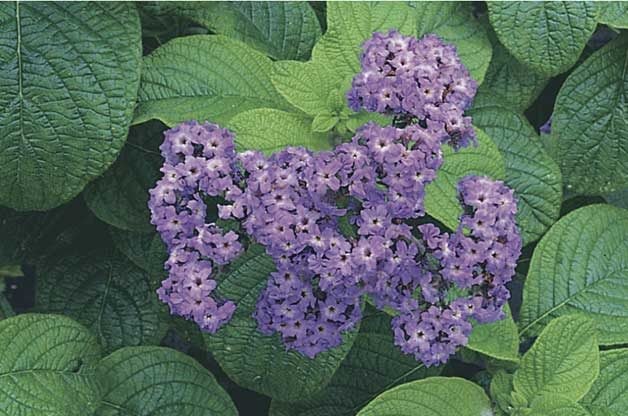
Heliotrope
Heliotropium arborescens, Zones 10 & 11, annual elsewhere
Fragrant purple, violet or white flowers will attract bees, but you’ll enjoy the lovely fragrance in the landscape as well. Grow these annuals in the garden or a container in full sun and moist well-drained soil.
Why we love it: Potted plants or those started from cuttings late in the season can be overwintered indoors.
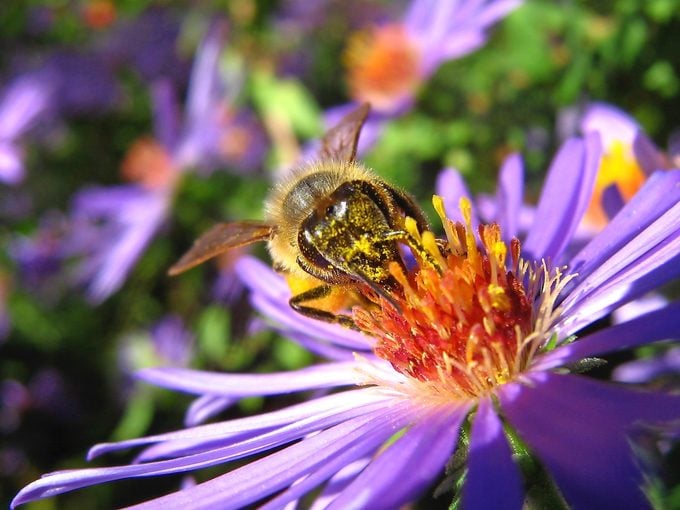
Aster
Aster, Zones 4 to 9
The aster is a late flowering fall plant that’s important for pre-hibernation bumblebee queens. Blue, lavender, pink or white flowers look lovely as ground cover, along borders or in containers. Asters also attract butterflies.
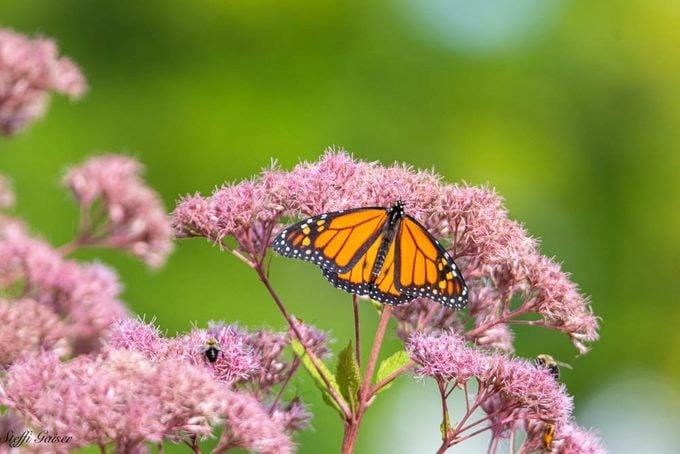
Joe Pye Weed
Eupatorium purpureum, Zones 3 to 9
Primarily known as a butterfly plant, this perennial flower also attracts bees with its fragrant pink-purple blooms. It prefers moist soil where it can shoot up to 9 feet tall.
Check out the go-to flowers you should plant in your butterfly garden.
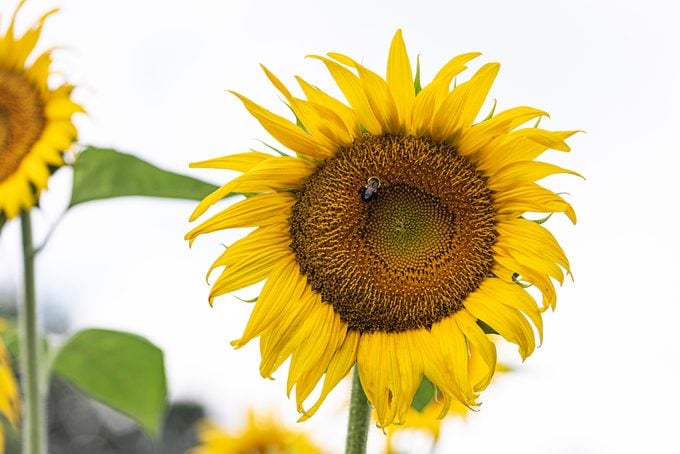
Sunflower
Helianthus, annual
Sunflowers are a favorite flower of many beneficial bee species. Easy to establish and tolerant of most soils, sunflowers can grow almost anywhere. You should also grow sunflowers for birdseed.
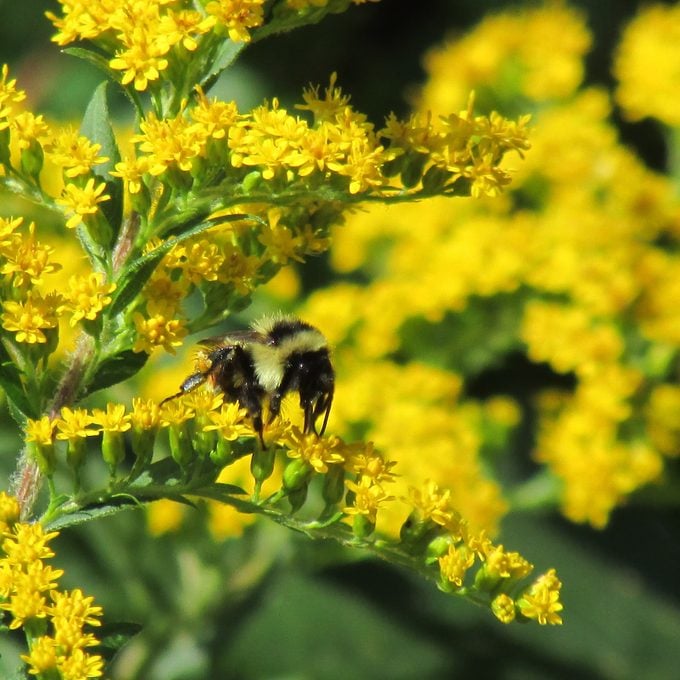
Goldenrod
Solidago, Zones 3 to 10
With its feathery yellow blossoms, goldenrod provides late-season forage for honeybees, bumblebees, butterflies, beneficial wasps, soldier beetles and more.
Learn how to build a DIY bug hotel.
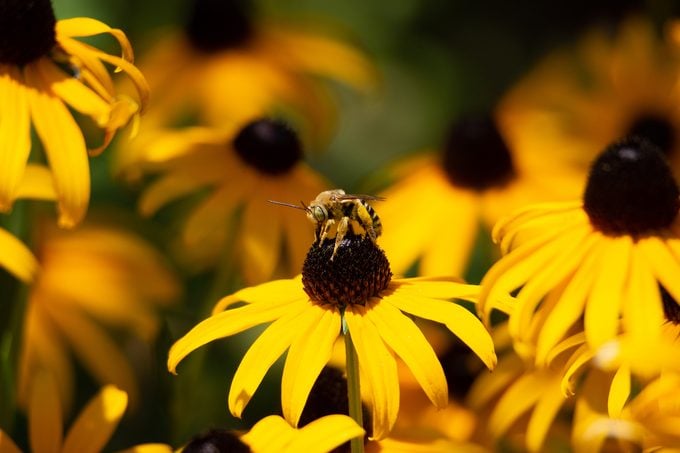
Black-eyed Susan
Rudbeckia, Zones 3 to 10
Its bright yellow blooms and dark brown centers offer a cheery spot in any garden. These flowers attract bees and other beneficial garden insects. Some varieties feature orange and red petals or bicolored blooms.
Discover more easy ways you can help the bees.
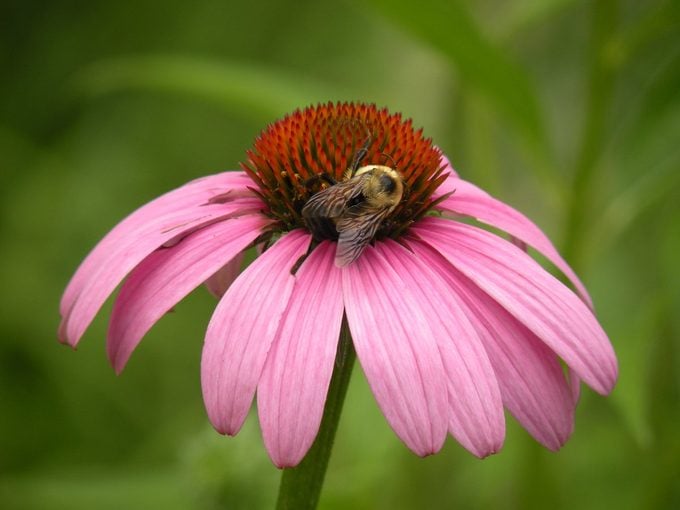
Coneflower
Echinacea purpurea, Zones 3 to 8
This native wildflower is simple to grow and has masses of tall purple blooms. Recent cultivars come in other colors, but stick with natives for the most nectar value. Coneflowers also attract birds and butterflies.
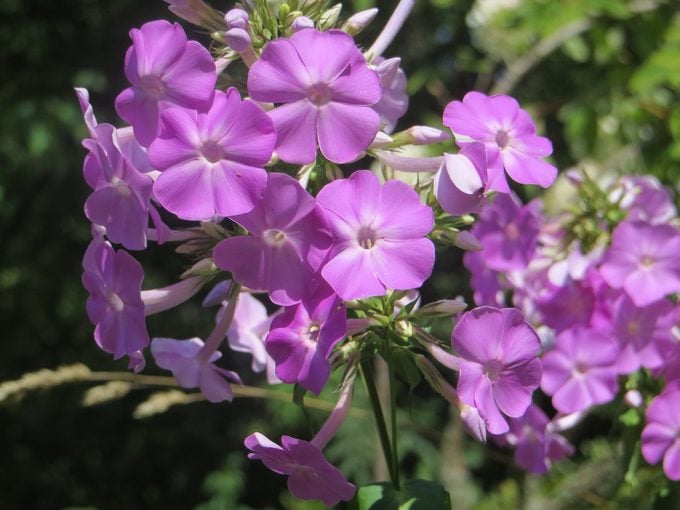
Phlox
Paniculata, Zones 3 to 9
This hardy native perennial has fragrant, blue-pink flowers that attract bees and other pollinators in mid to late summer.
Discover more super fragrant flowers that pollinators love.
